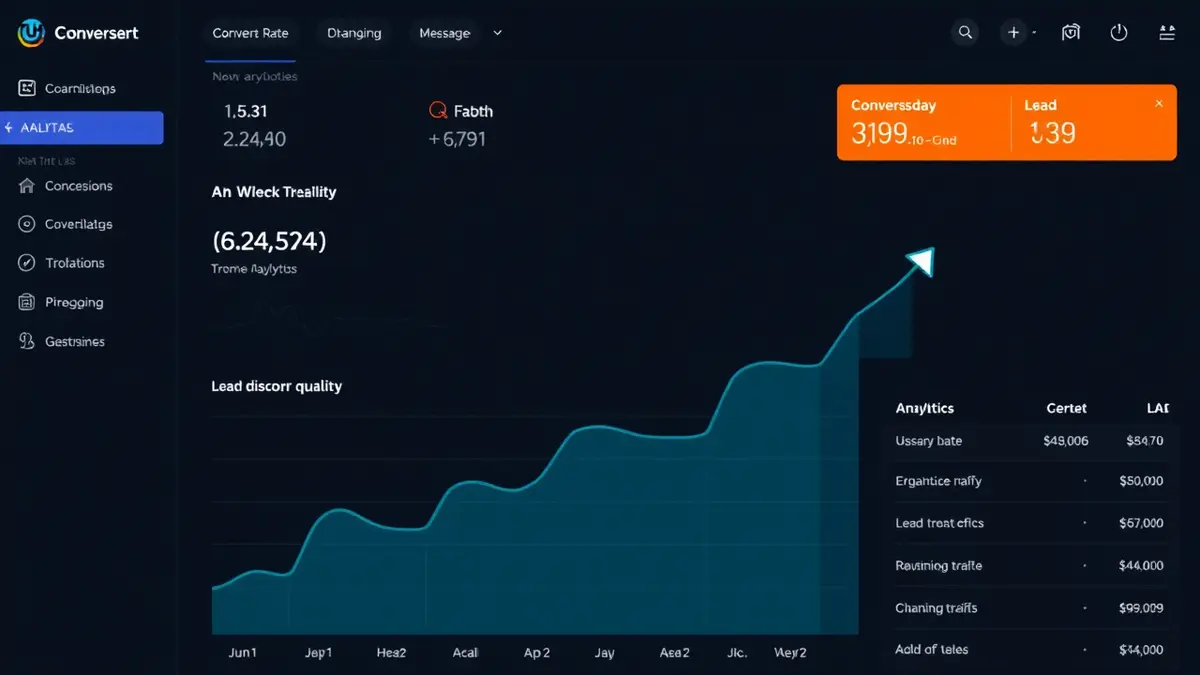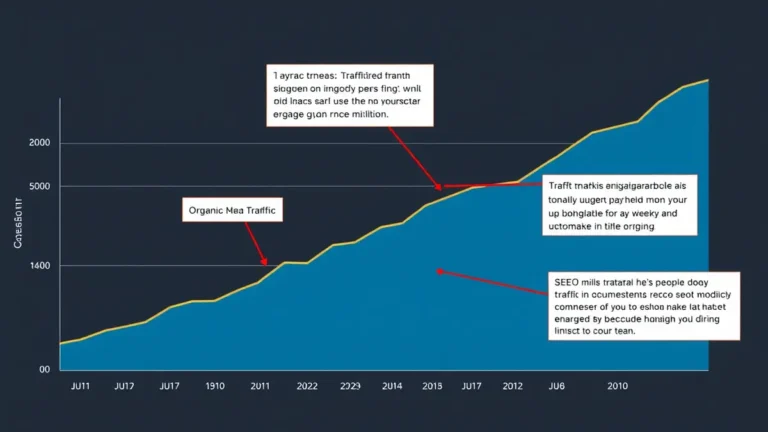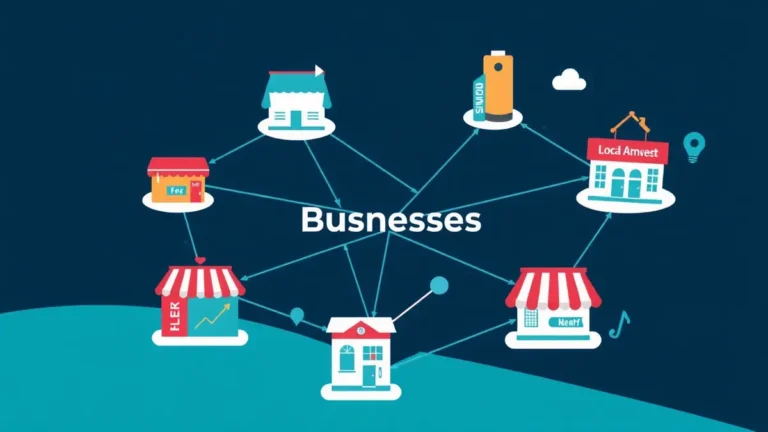This article unpacks the secrets to creating SEO content that not only ranks well but also drives conversions, turning casual visitors into loyal customers. Forget chasing vanity metrics; it’s time to build content that delivers real business results.
What You’ll Learn
- Why Conversion-Focused SEO Matters
- Understanding Your Audience: The Foundation of Conversion
- Keyword Research with Conversion in Mind
- Crafting Compelling Content: Beyond Just Information
- Optimizing for User Experience (UX) to Boost Conversions
- Strategic Calls to Action (CTAs): Guiding Users Towards Conversion
- Leveraging Social Proof to Increase Trust and Conversions
- Mobile Optimization: A Non-Negotiable for Conversion
- Measuring and Analyzing Your Results: Iterating for Success
- Advanced Strategies: Personalization and Automation
Why Conversion-Focused SEO Matters
Okay, let's get real for a second. You're pouring time, energy, and maybe even some serious cash into your SEO efforts. You're chasing those top rankings, because… well, because that’s what you’re supposed to do, right? But what if all those clicks aren't translating into actual business growth? What if you're just attracting a bunch of tire-kickers who bounce faster than a rubber ball?
That's where conversion-focused SEO comes in. It's about shifting your mindset from simply attracting traffic to attracting qualified traffic – people who are genuinely interested in what you have to offer and are ready to take the next step, whether that's making a purchase, signing up for a newsletter, or requesting a demo. And believe me, I've seen businesses skyrocket their revenue just by tweaking their content to better resonate with their target audience. It's not just about getting seen; it's about getting chosen.
The old-school approach to SEO, which focused solely on ranking for high-volume keywords, is frankly, dying a slow death. Google's algorithm is getting smarter and smarter, rewarding content that not only provides valuable information but also delivers a seamless and engaging user experience. I mean, think about it, wouldn’t you rather have 100 visitors who are likely to convert than 1,000 who are just browsing? (I know I would.) The benefits are numerous:
- Higher ROI: Focusing on conversions means you're getting more bang for your buck from your SEO investments.
- Improved Lead Quality: Attracting the right audience leads to more qualified leads that are easier to nurture and convert into paying customers.
- Sustainable Growth: Building a loyal customer base through valuable content and a positive user experience sets you up for long-term success.
Understanding Your Audience: The Foundation of Conversion
Before you even think about keywords or backlinks, you need to have a rock-solid understanding of your target audience. Duh, right? But seriously, this goes way beyond basic demographics. You need to dig deep and understand their pain points, their motivations, their desires, and the language they use.
Imagine trying to sell a high-end coffee maker to someone who only drinks instant coffee. You could have the most amazing sales pitch in the world, but it's not going to resonate because you're not speaking to their needs. That’s why crafting content without a clear understanding of who you are creating it for is like throwing darts in the dark.
Here’s how to gain this understanding:
- Create Detailed Buyer Personas: Give your ideal customers names, personalities, and backstories. What are their goals? What are their challenges? Where do they spend their time online?
- Conduct Customer Surveys and Interviews: Go straight to the source and ask your existing customers what they love (and hate) about your product or service. What problem does it solve for them? What language do they use to describe it?
- Analyze Your Website Analytics: Dive into your Google Analytics data to understand who is visiting your site, how they are finding you, and what they are doing once they get there. Pay close attention to bounce rates, time on page, and conversion rates.
- Monitor Social Media: Keep an eye on what your target audience is saying on social media. What are they talking about? What are their concerns? What kind of content are they sharing?
By truly understanding your audience, you can create content that speaks directly to their needs and desires, building trust and ultimately driving conversions. As discussed in "Content SEO Strategy A Comprehensive Framework", content should always start with the user's needs.
Keyword Research with Conversion in Mind
Okay, so you know your audience inside and out. Now it's time to get down to the nitty-gritty of keyword research. But forget about just targeting high-volume keywords that everyone else is chasing. You need to focus on keywords that indicate intent – the likelihood that someone searching for that term is ready to take action. This is all about zeroing in on the people who are most likely to become customers.
Think about it: someone searching for "best running shoes" is likely just doing research. But someone searching for "buy Nike Air Zoom Pegasus online" is ready to make a purchase. See the difference? A TechCrunch piece last spring highlighted a similar concept around “buyer-intent” keywords and their dramatic impact on conversion rates, specifically noting that businesses saw as much as a 40% increase in conversion when focusing on those terms. (Of course, I can't find the exact article right now… but trust me, it was compelling.)
Here's how to find those high-intent keywords:
- Focus on Long-Tail Keywords: These are longer, more specific phrases that indicate a clear intent. Instead of "CRM software," try "CRM software for small business sales team."
- Use Modifier Keywords: Add words like "buy," "shop," "discount," "review," or "best" to your keywords to target users who are further along in the buying process.
- Analyze Your Competitors: See what keywords your competitors are using to drive conversions. What language are they using in their ad copy and landing pages? What offers are they promoting?
- Use Keyword Research Tools: Tools like SEMrush, Ahrefs, and Moz Keyword Explorer can help you identify high-intent keywords and analyze their search volume and competition.
Remember, it's not just about finding the right keywords; it's about using them strategically throughout your content. Incorporate them naturally into your headlines, body copy, and calls to action.
Crafting Compelling Content: Beyond Just Information
Alright, you've got your target audience dialed in and your high-intent keywords locked and loaded. Now comes the fun part: actually creating the content. But don't just regurgitate information that's already out there. You need to create content that is engaging, informative, and, most importantly, persuasive. You need to create content that not only answers their questions but also compels them to take action.
Think of your content as a conversation with your ideal customer. What would you say to them to convince them that your product or service is the perfect solution to their problem? How would you build trust and establish yourself as an authority in your industry?
Here are some tips for crafting killer content that converts:
- Write Clear and Concise Copy: Get straight to the point and avoid jargon or overly technical language. Use short sentences and paragraphs to make your content easy to read and digest.
- Tell a Story: People are drawn to stories. Use anecdotes, case studies, and personal experiences to illustrate your points and make your content more relatable.
- Use Strong Visuals: Break up your text with images, videos, and infographics. Visuals can help you capture attention, explain complex concepts, and increase engagement.
- Address Objections: Anticipate your audience's concerns and address them head-on. Why might they be hesitant to buy your product or service? What are their biggest fears?
- Provide Value: Give your audience something they can use, whether it's a free template, a helpful checklist, or a valuable piece of advice. Show them that you're not just trying to sell them something; you're trying to help them solve a problem.
Content should never just be filler. Remember, as "Bad Content Kills Good SEO Here's the Cure" points out, irrelevant or poorly written copy can do more harm than good.
Optimizing for User Experience (UX) to Boost Conversions
Let's say you've created the most amazing, persuasive content in the world. But if your website is slow, clunky, and difficult to navigate, you're going to lose potential customers faster than you can say "bounce rate." User experience (UX) is critical for conversion-focused SEO. You need to make it as easy as possible for visitors to find what they're looking for and take the desired action.
Imagine walking into a store where the shelves are disorganized, the lighting is dim, and the staff is unhelpful. You'd probably turn around and walk right back out, right? Your website is no different.
Here are some key UX considerations:
- Page Speed: Make sure your website loads quickly. A slow website is a conversion killer. (Run a Google PageSpeed Insights test, like, now.)
- Mobile Friendliness: Ensure your website is responsive and looks great on all devices. Mobile traffic is only going to continue to increase, so a mobile-first approach is essential.
- Easy Navigation: Make it easy for visitors to find what they're looking for. Use clear and concise navigation menus, internal links, and a search bar. (Hey, check out "Creating Linkable Assets: Content That Earns Links" for more tips.)
- Clear Visual Hierarchy: Use headings, subheadings, bullet points, and white space to break up your text and make it easier to read. Guide the reader's eye and highlight the most important information.
- Accessibility: Make sure your website is accessible to people with disabilities. Use alt text for images, provide captions for videos, and ensure your website is navigable using a keyboard.
Strategic Calls to Action (CTAs): Guiding Users Towards Conversion
You've attracted the right audience, you've created compelling content, and you've optimized your website for user experience. Now it's time to seal the deal with strategic calls to action (CTAs). A CTA is an instruction to your audience that tells them what you want them to do next. It could be anything from "Buy Now" to "Sign Up for Our Newsletter" to "Request a Demo." Without clear CTAs, you're leaving money on the table.
Think of a CTA as a friendly nudge that guides your visitors towards the desired outcome. It's like saying, "Hey, you've made it this far. Why not take the next step?" (But, you know, in a less cheesy way.)
Here are some tips for crafting effective CTAs:
- Use Strong Action Verbs: Start your CTAs with verbs like "Get," "Download," "Start," or "Join."
- Make Them Stand Out: Use contrasting colors, bold fonts, and strategic placement to make your CTAs visually prominent.
- Create a Sense of Urgency: Use phrases like "Limited Time Offer" or "Sign Up Today" to encourage immediate action.
- Personalize Your CTAs: Tailor your CTAs to the specific page and audience. For example, on a product page, use a CTA like "Add to Cart." On a blog post, use a CTA like "Download Our Free Ebook."
- Test Different CTAs: Experiment with different wording, colors, and placements to see what works best for your audience.
Leveraging Social Proof to Increase Trust and Conversions
People are naturally skeptical. They don't want to be the first ones to try something new. That's why social proof is so powerful. Social proof is the idea that people are more likely to take action if they see that others have already done so. It's like seeing a long line outside a restaurant – you automatically assume it must be good.
There are several different types of social proof you can use to increase trust and conversions:
- Testimonials: Feature positive reviews and testimonials from satisfied customers.
- Case Studies: Showcase how your product or service has helped other businesses achieve their goals.
- Social Media Mentions: Display positive comments and mentions from social media users.
- Trust Badges: Display security badges and certifications to show that your website is safe and trustworthy.
- Numbers: Highlight the number of customers you've served, the number of downloads you've received, or the number of positive reviews you've earned.
By leveraging social proof, you can overcome skepticism, build trust, and ultimately drive more conversions. Show, don't tell, that your product or service is worth the investment.
Mobile Optimization: A Non-Negotiable for Conversion
I know, I know, I already mentioned mobile-friendliness in the UX section. But it's so important that it deserves its own section. In today's mobile-first world, if your website isn't optimized for mobile devices, you're basically invisible. I mean, think about it: how many times have you abandoned a website because it was too difficult to navigate on your phone?
Mobile optimization is no longer a "nice-to-have"; it's a must-have. Here are some key considerations:
- Responsive Design: Use a responsive design that adapts to different screen sizes.
- Fast Loading Times: Optimize your images and code to ensure your website loads quickly on mobile devices.
- Touch-Friendly Navigation: Make sure your buttons and links are large enough and spaced far enough apart to be easily tapped on a touchscreen.
- Simplified Forms: Keep your forms short and sweet. Ask for only the essential information.
- Mobile-Specific CTAs: Tailor your CTAs to mobile users. For example, use a "Click to Call" button for phone numbers.
Measuring and Analyzing Your Results: Iterating for Success
You've implemented all of these conversion-focused SEO strategies. But how do you know if they're actually working? The answer is data. You need to track your results, analyze your data, and iterate on your strategies based on what you learn. This is an ongoing process of testing, measuring, and refining. It's not a one-and-done thing.
Here are some key metrics to track:
- Organic Traffic: Monitor the amount of traffic you're getting from search engines.
- Keyword Rankings: Track your rankings for your target keywords.
- Bounce Rate: See how quickly visitors are leaving your website.
- Time on Page: Measure how long visitors are spending on your pages.
- Conversion Rate: Track the percentage of visitors who are taking the desired action (e.g., making a purchase, signing up for a newsletter).
- Lead Quality: Assess the quality of the leads you're generating from your SEO efforts.
Use tools like Google Analytics, Google Search Console, and your CRM to track these metrics. Look for patterns and trends in your data. What's working? What's not? Then, adjust your strategies accordingly. Maybe your conversion rates on mobile are abysmal, or you might realize your backlink profile isn't as diverse as you thought. (Time to check out "Backlink Diversity: Why It’s Crucial for SEO", perhaps?)
Advanced Strategies: Personalization and Automation
Once you've mastered the basics of conversion-focused SEO, you can start exploring more advanced strategies like personalization and automation. Personalization involves tailoring your content and website experience to individual users based on their demographics, interests, and behavior. Automation involves using software to automate repetitive tasks, such as email marketing and social media posting.
Think of it this way: instead of sending the same generic email to everyone on your list, you can segment your audience and send personalized emails based on their interests and past purchases. Or, instead of manually posting to social media every day, you can use a tool like Buffer or Hootsuite to schedule your posts in advance. The more that the content feels like it was created just for them, the more likely they are to respond favorably.
Here are some examples of how you can use personalization and automation to boost conversions:
- Personalized Email Marketing: Segment your email list and send targeted emails based on user behavior.
- Dynamic Website Content: Display different content to different users based on their location, interests, or past behavior.
- Chatbots: Use chatbots to provide instant customer support and answer common questions.
- Marketing Automation: Automate repetitive tasks like lead nurturing, email follow-up, and social media posting.
Conversion-focused SEO is a marathon, not a sprint. But by implementing these strategies, you can start seeing a real return on your investment.



